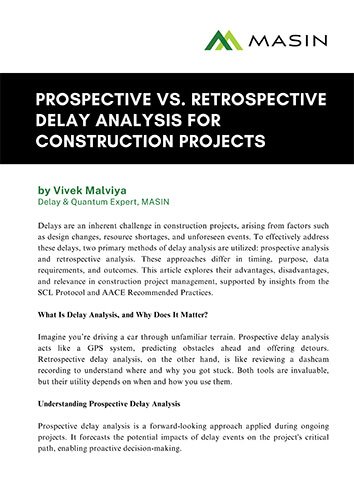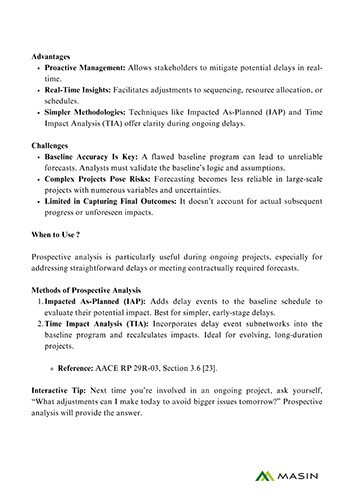

When to Use ?
Prospective analysis is particularly useful during ongoing projects, especially for addressing straightforward delays or meeting contractually required forecasts. Methods of Prospective Analysis
- Impacted As-Planned (IAP): Adds delay events to the baseline schedule to evaluate their potential impact. Best for simpler, early-stage delays.
- Time Impact Analysis (TIA): Incorporates delay event subnetworks into the baseline program and recalculates impacts. Ideal for evolving, long-duration projects.
Frequently Asked Questions
Get answers to frequently asked questions about everything we do.
What is delay analysis, and why is it important in construction projects?
Delay analysis identifies and assesses the causes and impacts of delays on a project’s schedule. It is essential for managing time, preventing cost overruns, resolving disputes, and maintaining project accountability.
What is prospective delay analysis?
Prospective delay analysis is a forward-looking approach used during an ongoing project. It predicts the potential impacts of delays to help proactively manage and mitigate them.
Common Methods:
- Impacted As-Planned (IAP)
- Time Impact Analysis (TIA)
When should I use prospective analysis?
Use it when a project is ongoing, especially for:
- Forecasting schedule impacts
- Making real-time adjustments
- Meeting contractual reporting requirements
What is retrospective delay analysis?
Retrospective delay analysis is a backward-looking approach used after a delay or at project completion. It investigates actual events to determine their causes and consequences.
Common Methods:
- As-Planned vs. As-Built
- Time Slice Window Analysis
- Collapsed As-Built
Can both methods be used in one project?
Yes. Projects may begin with prospective analysis and later switch to retrospective for final delay evaluation. However, consistency in data and methodology is crucial during this transition.
